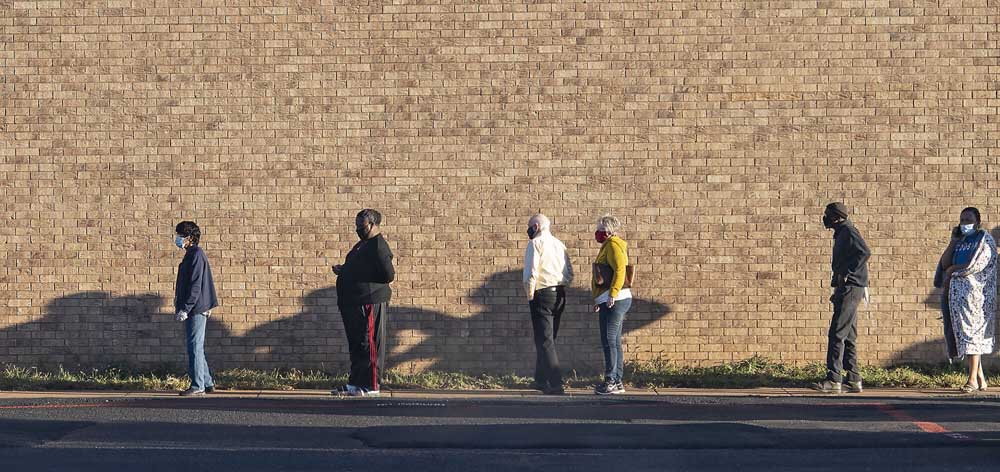What do lower levels of COVID-19 community spread actually mean?
Published 5:45 am Saturday, September 25, 2021

- Voters wait in line to cast their ballots at the Heritage Building,1900 Bellwood Rd, as polls opened on Oct. 13, 2020 in Tyler for early voting for the November 2020 presidential election.
The rate of COVID-19 spread in Gregg County remains about half of what it was in early September, after the Northeast Texas Public Health District reported Thursday the county’s seven-day rolling rate stood at 74.11.
While that rate still is more than double NET Health’s threshold for “substantial” community spread, it’s significantly lower (48 percent) than the week of Sept. 3, when the rate reached 142.92. In the past week alone, the rate fell from 137.48 to 86.17.
Trending
The NET Health seven-day rolling rate calculates the average number of all COVID-positive cases from the previous seven days. That answer is then divided by the population of the county and multiplied by 100,000, which produces the official number.
What do the numbers mean?
Dr. Paul McGaha, Smith County health authority, weighed in.
“That’s a good thing, but the spread is still considered high,” Dr. Paul McGaha, a Smith County health authority, said about recent numbers. “Overall in the nation, in Texas and in Smith County, we’re seeing a slight dip in case counts. That’s encouraging, but it’s really too early to tell if this is a permanent trend or not. Cases are still very high.”
Though it’s looking slightly better, rates are much higher than they were in the summer, McGaha said. “It’s too early to take this to the bank and say, ‘Our cases are decreasing.’ Positive trend, but lets continue to monitor it.”
To keep slowing the spread, vaccination against COVID-19 are recommended for all who are able to receive it.
Trending
In Gregg County, 55.65% of people 12 and older had received at least one dose of the COVID-19 vaccine, while 47.39% of residents 12 and older had been fully vaccinated, according to the state. State data shows 71.17% of Texas residents 12 and older had been vaccinated with at least one dose as of Thursday, while 60.83% had been fully vaccinated.
In Smith County, 54.29% of people 12 and older had received at least one dose of the COVID-19 vaccine, while 46.53% of people 12 and older had been fully vaccinated, according to the state. This means nearly half of the population within the county has yet to receive a COVID-19 vaccine. State data shows 81.94% of people aged 65 and older in the county had been vaccinated with at least one dose on Thursday, while 75.41% of that population had been fully vaccinated.
“Even though an individual who is young and healthy may not become very ill, and they contract covid disease, they could spread it to others who could, when they have the disease, become very, very ill or die,” McGaha said.
He said COVID-19 hospitalizations are slightly dipping but are still very high.
On Thursday, the latest day for which data was available, 723 COVID-19 patients were hospitalized in the state’s 19-county Trauma Region G with 264 of those in ICUs. Earlier this month, hospitalizations in the Longview-Tyler region reached 822, the highest number of single-day COVID-19 hospitalizations in the region since the pandemic began.
“There are way too many covid patients there, the vast majority unvaccinated,” he said. McGaha revealed that in a recent analysis, it was found unvaccinated patients make up 94 to 95% of those hospitalized in Smith County because of the virus.
Of the 5% that are vaccinated, many have underlying serious medical conditions, or are immune-surpressed. Many are also elderly populations, McGaha said, though reminding vaccines aren’t 100% effective.
“About five to 8% of people who receive the vaccine, the vaccine doesn’t work as effectively as it should, as with all vaccines, so we do have that happen sometimes, but the majority would have underlying medical conditions who have had the vaccine and who are still hospitalized,” he said.



